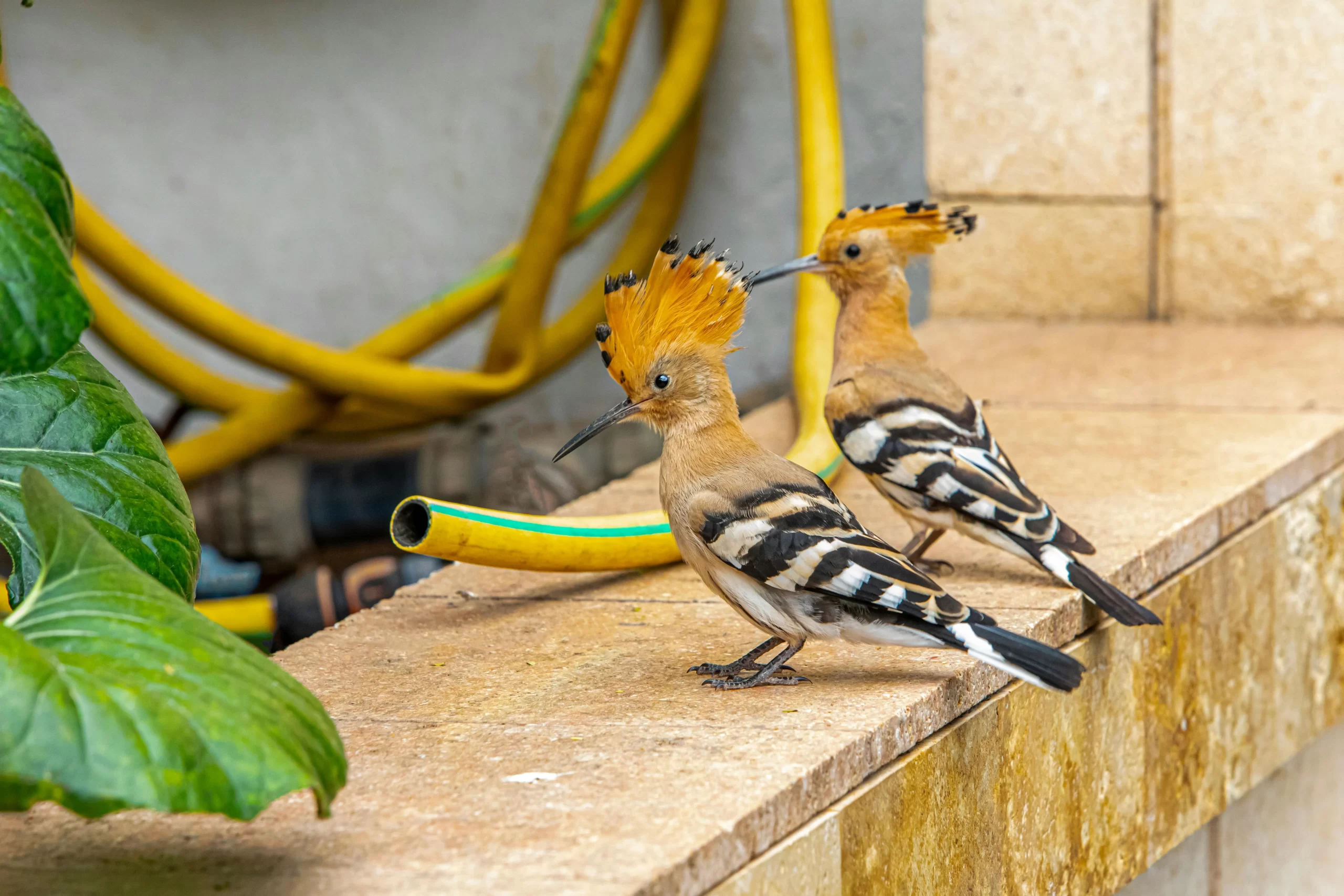Seeing a bird with mohawk-like feathers certainly makes such a bird memorable, but it also raises plenty of questions. For instance, why do birds with mohawks exist? What is the purpose of such an appearance?
Hang tight – I will answer your questions about how a bird with mohawk-like feathers may have evolved. Plus, I’ll reveal an assortment of unforgettable mohawk birds that may be found worldwide. Let’s learn about birds with mohawks!
Table of Contents
Why Do Birds With Mohawks Exist?
Before I reveal my list of exciting mohawk birds, let’s first figure out the reasons why some birds have evolved to have such interesting feathers atop their heads. Why do birds with mohawks exist?
Well, mohawks–otherwise known as crests–are a rather common occurrence in the avian kingdom. Indeed, many have a bird that immediately comes to mind when considering birds with crests. The exact reason why birds with mohawks exist will vary by species, but the primary reason that birds with crests evolved is due to bird mating systems.
Let me explain; competition for mates is fierce in some birds, with males with the most exaggerated features often winning over the right to mate. Crests are one example of an exaggerated trait in birds that can be used to win over mates.
In addition to mating purposes, some birds can raise and lower their crests depending on the message that they’re trying to communicate with other birds. Moreover, birds may use their crests as a means of surprising would-be predators.
Okay, now that we know more about some reasons why birds with mohawks have evolved, let’s go over some familiar examples of birds with mohawks that can be found in North America and Europe!
List of Unique Birds With Mohawks
Belted Kingfisher
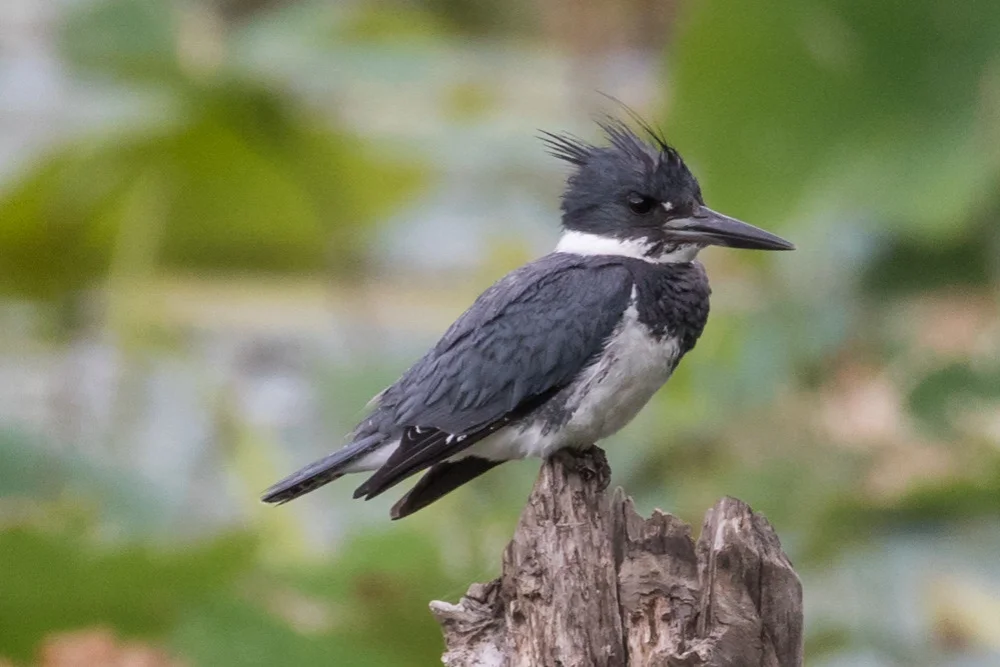
Belted Kingfishers are familiar birds across much of North America, breeding as far north as Alaska and wintering as far south as Venezuela. Indeed, Belted Kingfisher have an extensive range, so many are accustomed to seeing these blue birds with mohawks as they perch near water.
Rivers, lakes, ponds, and creeks are all good places to look for this crest bird. Here, they sit on exposed perches and wait to dive into the water to grab fish. They tend to avoid saltwater ecosystems, but they occasionally forage in estuaries where fresh water and salt water combine. Both males and females are birds with crests on their heads, and Belted Kingfishes are unlike most birds in that females are more colorful than males.
Blue Jay
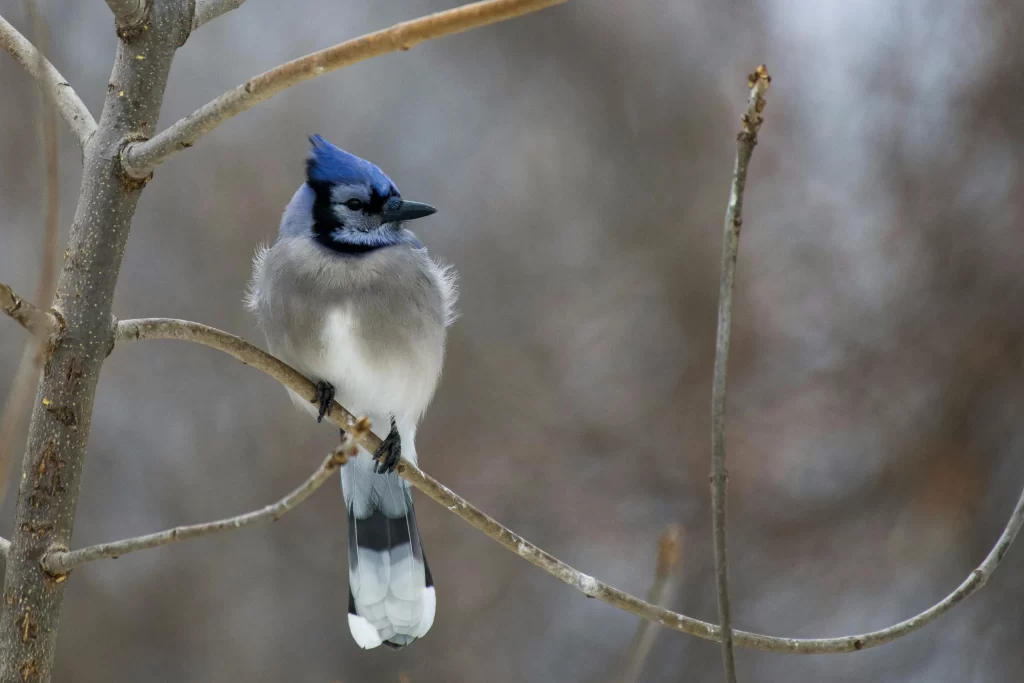
Blue Jays are a bird with crest feathers that is top of mind for many when thinking of birds with mohawks. Yes, Blue Jays are found throughout most of North America east of the Rocky Mountains.
They were formerly restricted to areas east of the Great Plains, but the planting of trees and windbreaks has allowed them to expand their range westward.
This blue bird with mohawk feathers regularly stops by urban backyards, making them well-known to even those who aren’t interested in birds. Some regard Blue Jays as mean birds, but it’s hard to hold a grudge against a mohawk bird such as this one.
Blue Jays love to forage in areas with abundant oak trees, and they may cache thousands of acorns every year. Although Blue Jays are attractive birds, their mannerisms are not always the best, leading some to dislike them.
Bohemian Waxwing
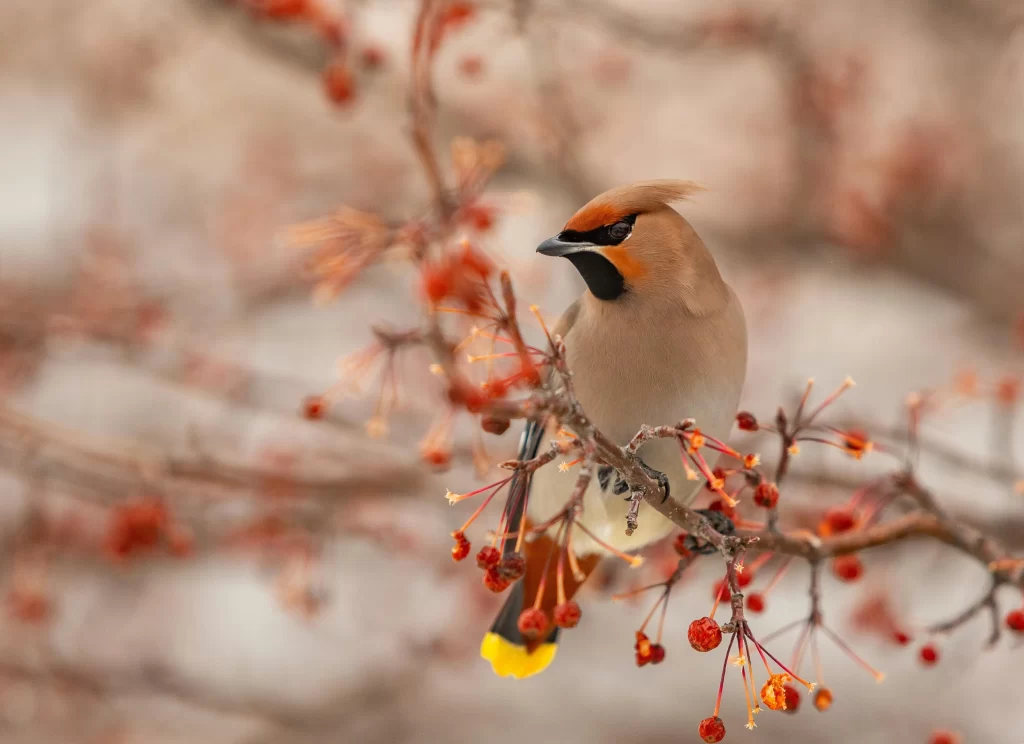
Three species of waxwings can be found across the world, with all three being a bird with crest on head. Although Cedar Waxwings are more familiar to most in North America, Bohemian Waxwings are more widespread and better known overall. Indeed, this crest bird is found throughout most of the northern hemisphere.
This gray bird with crest breeds in remote northern bogs and forests, but they migrate to more southerly latitudes during winter, making them more visible to birders. They don’t typically get much further south than Michigan in the United States, but they occasionally wander south if food is scarce.
Bohemian Waxwings are gregarious, feeding in sizable flocks as they congregate at food sources such as berries. These crested birds are sexually monomorphic, with no apparent differences between males and females.
Crested Tit
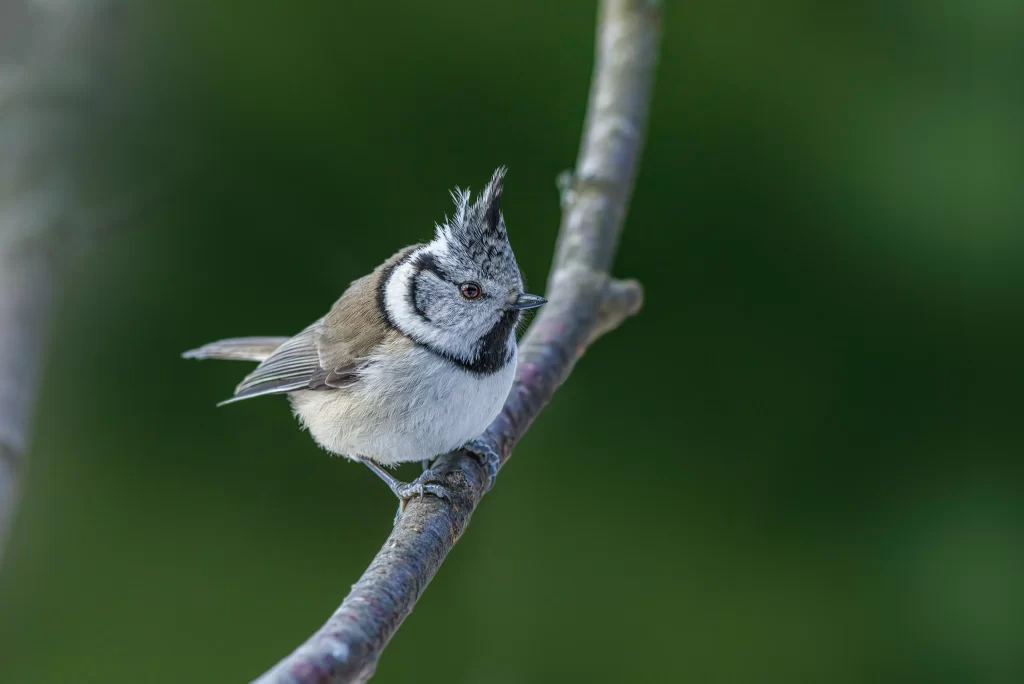
A crested birds list wouldn’t be complete without the aptly-named Crested Tit. These tiny songbirds are native to much of Europe. However, they are uncommon tit birds in the UK, being confined to the Scottish Highlands. Despite their small size, they’ve got prominent crests that make them appear slightly larger.
Look for these small birds with mohawks in coniferous forests. Here, they form pairs and breed in subtle cavities within trees. These sexually monomorphic birds live very brief lives on average, so pairs typically end up mating for life. Their diets are primarily centered around invertebrates and seeds.
Eurasian Hoopoe
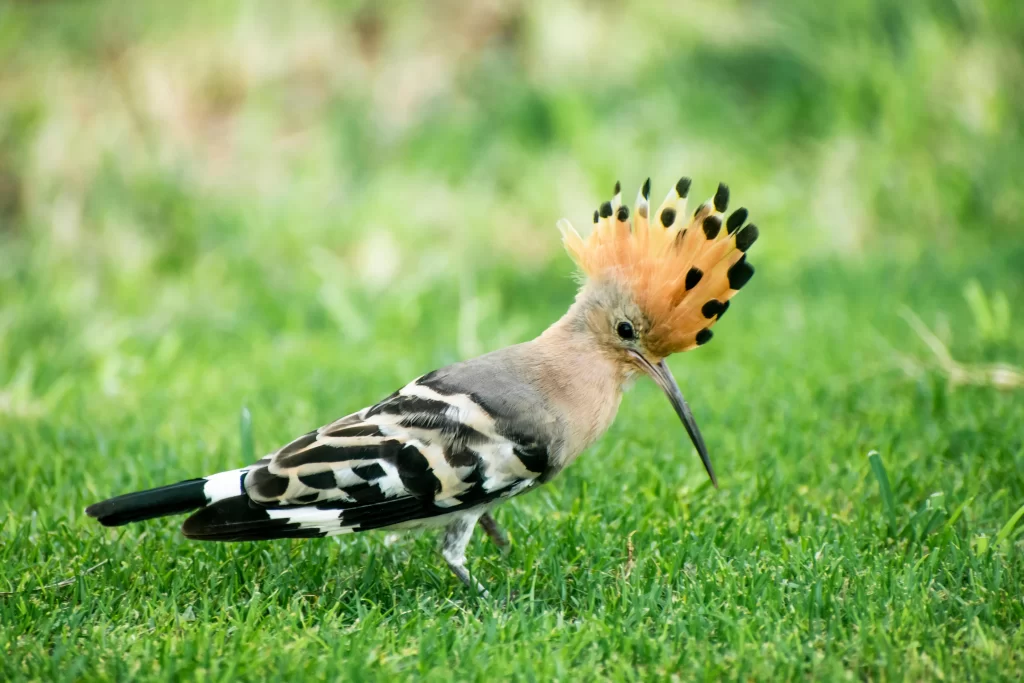
The Eurasian Hoopoe is a captivating orange and black bird with mohawk feathers. Being so colorful and possessing such an ornate mohawk makes them among the most memorable birds with crests on this list.
Eurasian Hoopoes are part of a wildly unique family of birds that nest in cavities and eat insects that they capture with their long bills. These birds with crests on their head have a massive range, being found from Portugal east to Korea and south to South Africa. Be sure to keep your distance from Eurasian Hoopoes – they can emit a foul odor as a means of defense.
Hooded Merganser
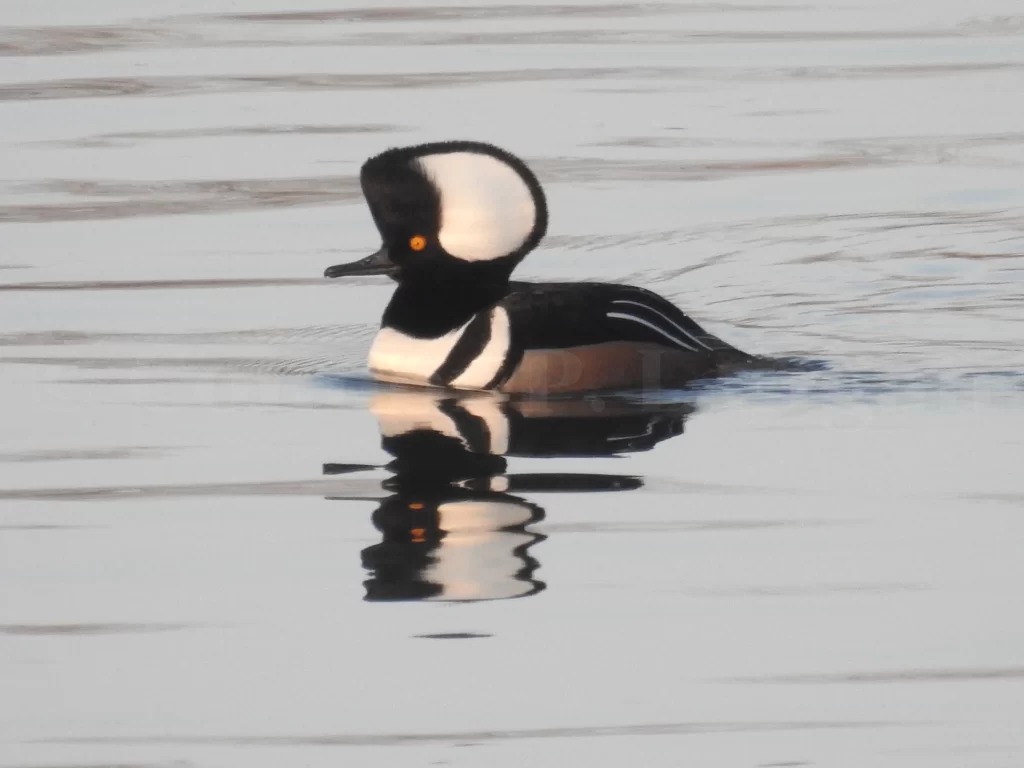
Hooded Mergansers are among the finest examples of a bird with a mohawk. Yes, these small ducks can lower their mohawks and then suddenly raise them when they’re feeling threatened or during times in which they’re performing courtship rituals. Although sexually dimorphic, both males and females can raise their crests.
Hooded Mergansers are found in North America, breeding as far north as southern Alaska and wintering into southern Texas. Look for these North American birds with crests of North America along creeks, wetlands, and other quiet bodies of water. Here, they breed in cavities or birdhouses.
Northern Cardinal
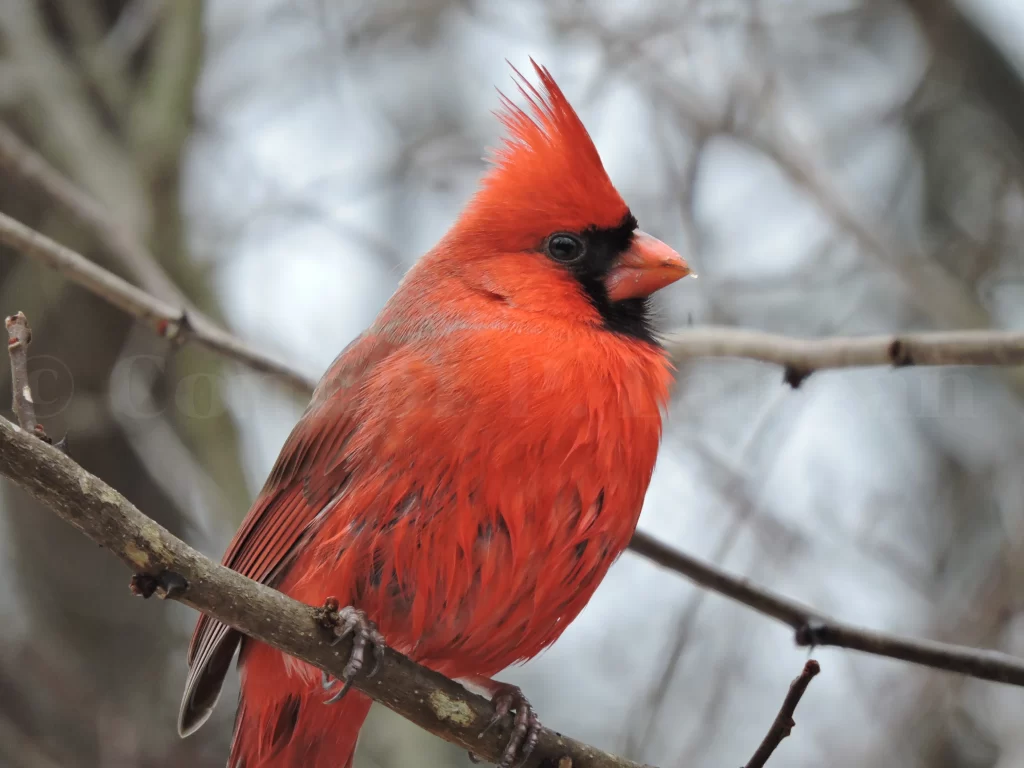
Northern Cardinals are perhaps the best-known bird with mohawk feathers on their heads. Males are a red bird with mohawk feathers, while a female is a brown bird with mohawk feathers. Northern Cardinals typically have their crests raised, but they are capable of lowering their mohawks.
These birds with mohawks are found throughout most of eastern North America and the American Southwest. Northern Cardinals find yards with plenty of shrubs to be optimal habitats. Here, they may build their nests in dense shrubs. As many birders know, cardinals will commonly eat seeds from bird feeders.
Northern Lapwing
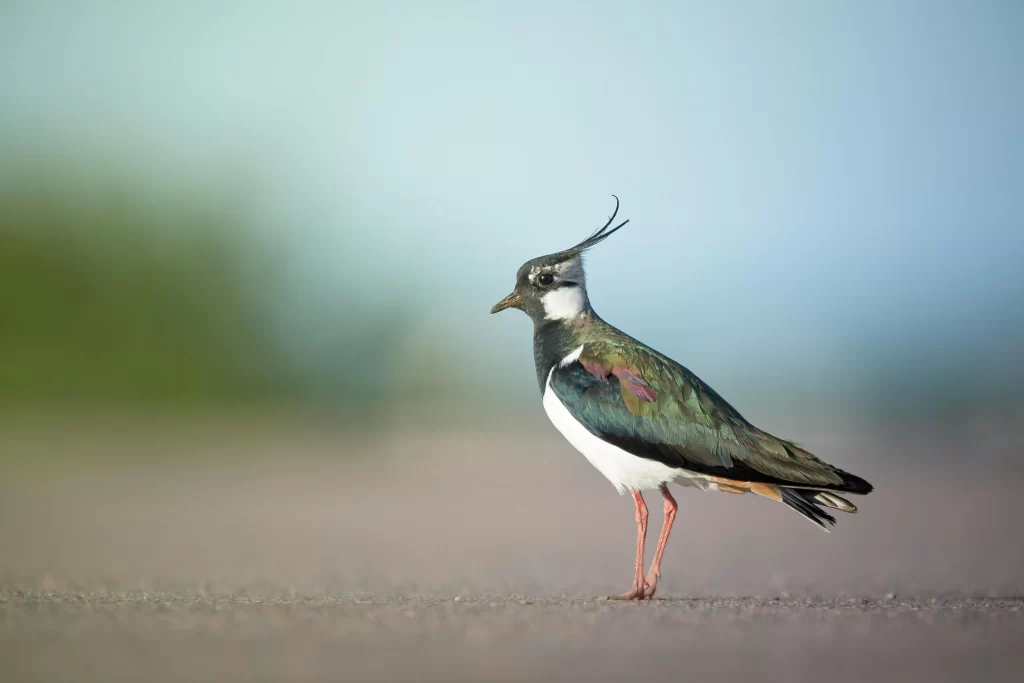
A Northern Lapwing is a large bird with crest on head, and what a crest they have! The long plume-like feathers that protrude from the head of a Northern Lapwing are quite incredible, with both males and females having this feature.
Although they are familiar British birds with crests, the range of Northern Lapwings extends all the way east to Japan. These birds with crests frequently congregate at shallow, wet sites. Indeed, such locations are key to breeding success, but these habitats are becoming rare with more efficient agriculture. Overall, Northern Lapwings are considered to be a near threatened species.
Pileated Woodpecker
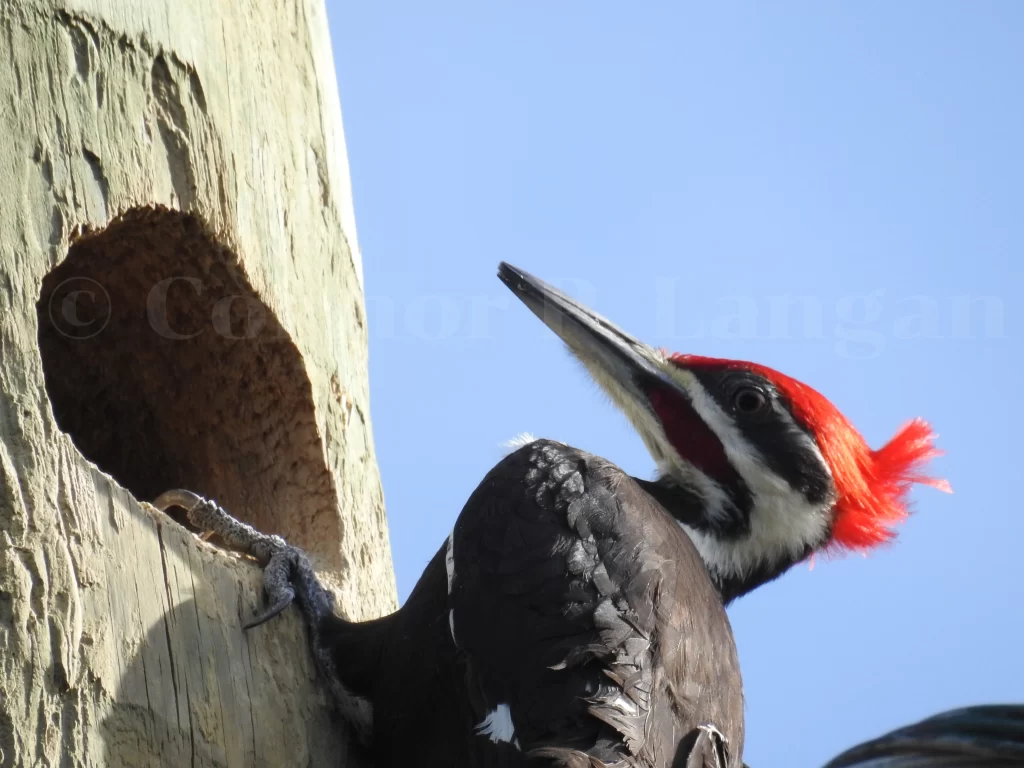
Once a birder can look past the enormous size of Pileated Woodpeckers, they will likely focus on the blazing red mohawks of these impressive creatures. In addition to being the largest woodpeckers in North America, they are also the only species that has a crest.
These big birds with crests can be found in most of eastern Northern America, but they also occur along much of the West Coast. Pairs of Pileated Woodpeckers require large swaths of mature forest. Here, these birds with mohawks bore into trees and devour grubs and other insects.
Phainopepla
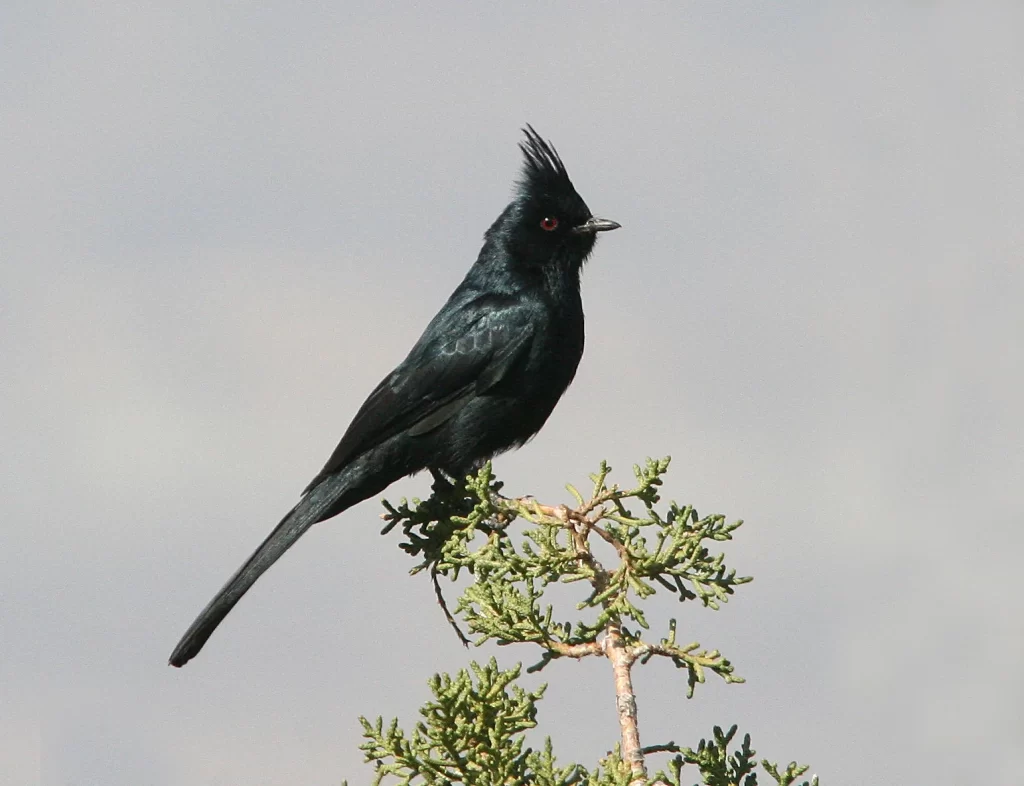
Seeing a Phainopepla will remind many birders of Northern Cardinals. Although they are about the same size and also feature sexually dimorphic plumages, these birds with crests on their heads are not in the same family as cardinals, instead being the only member of their family in the United States.
Phainopeplas are eye-catching, with males having glossy black feathers and females being grayish. Both sexes have bright red eyes. Look for this black bird with crest on head in dry, arid habitats where they eat insects and berries.
Scaled Quail
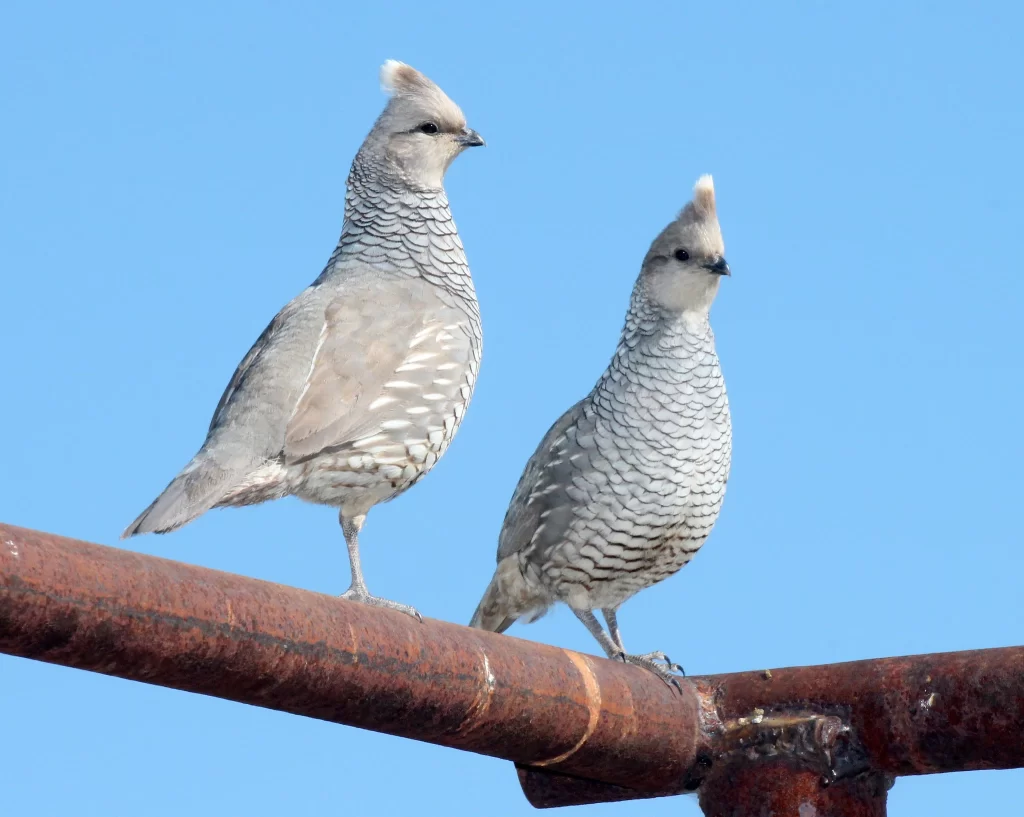
The Scaled Quail is a bird with mohawk feathers that is the best example of such a bird within the American quail family. Like other quails, Scaled Quails live brief, difficult lives highlighted by prolific breeding abilities.
If you see a bird with a mohawk in arid areas of the American Southwest and deserts of northern Mexico, then there’s a good chance it was a Scaled Quail. Here, they glean seeds and insects from the ground while scurrying among cacti and other desert plants. These birds with mohawks have white that adorns the tips of their crests, earning them the nickname, “cottontop”.
Steller’s Jay
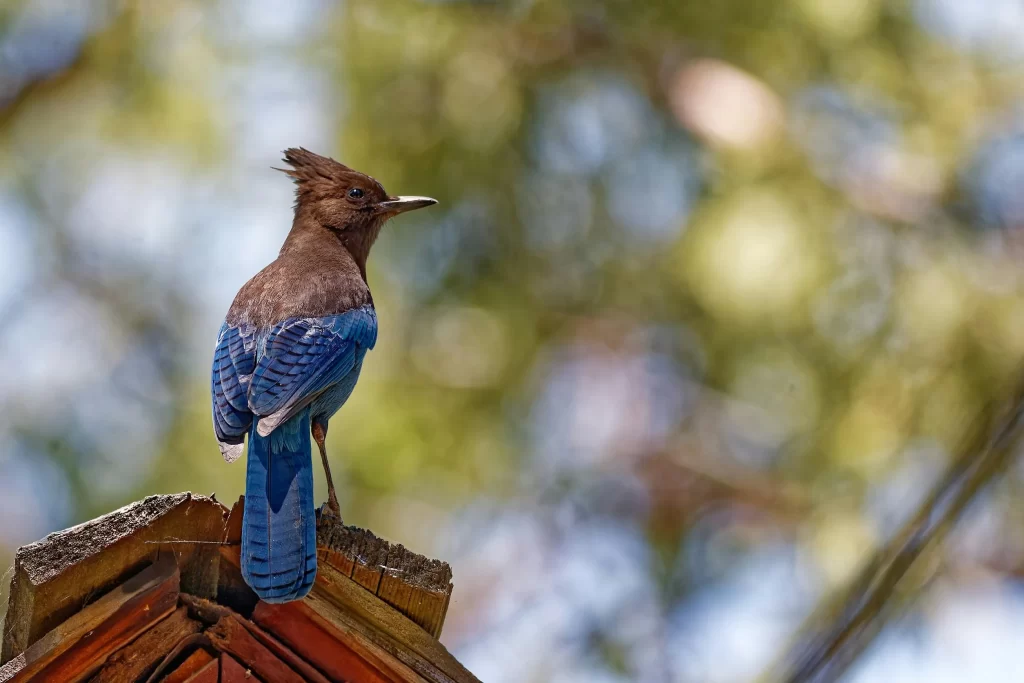
Steller’s Jays are a black and blue bird with mohawk feathers. They are birds with a mohawk that are similar to Blue Jays, but they are native to coniferous forests located within mountains and the mountain foothills west of the Rocky Mountains. Their range includes only about half of California yet it extends as far south as Nicaragua.
Like their Blue Jay relatives, these birds with crests may visit bird feeders and display loud, raucous behavior. They love to devour peanuts and other large seeds, but they don’t enjoy sharing bird feeders with smaller species.
Tufted Titmouse
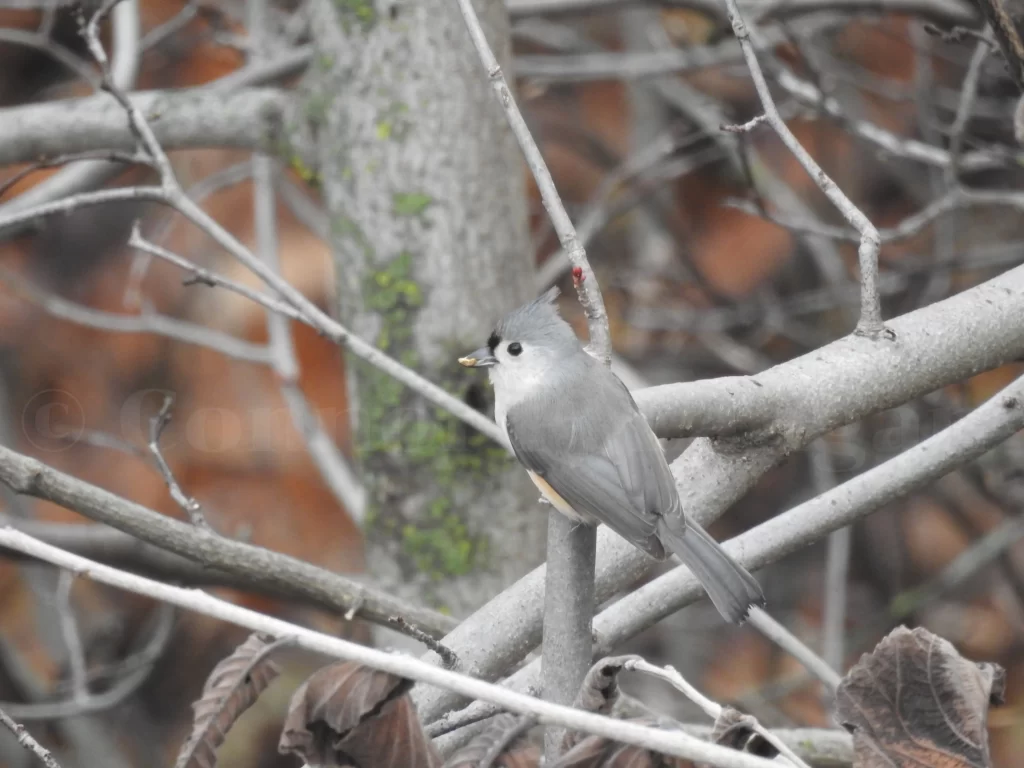
The Tufted Titmouse is a charming small gray bird with crest feathers and a funny name. Indeed, sexes are monomorphic, being entirely gray save for a few buffy-colored feathers near their flanks. They are found east of the Great Plains as far south as Florida, though their range is slightly expanding westward.
Tufted Titmice a pleasant backyard visitors who feed from bird feeders and nest in birdhouses. Here, they sing their lovely, “peter-peter-peter” songs on repeat. These small birds with mohawks make little movements, being found in the same general areas for their whole lives.

